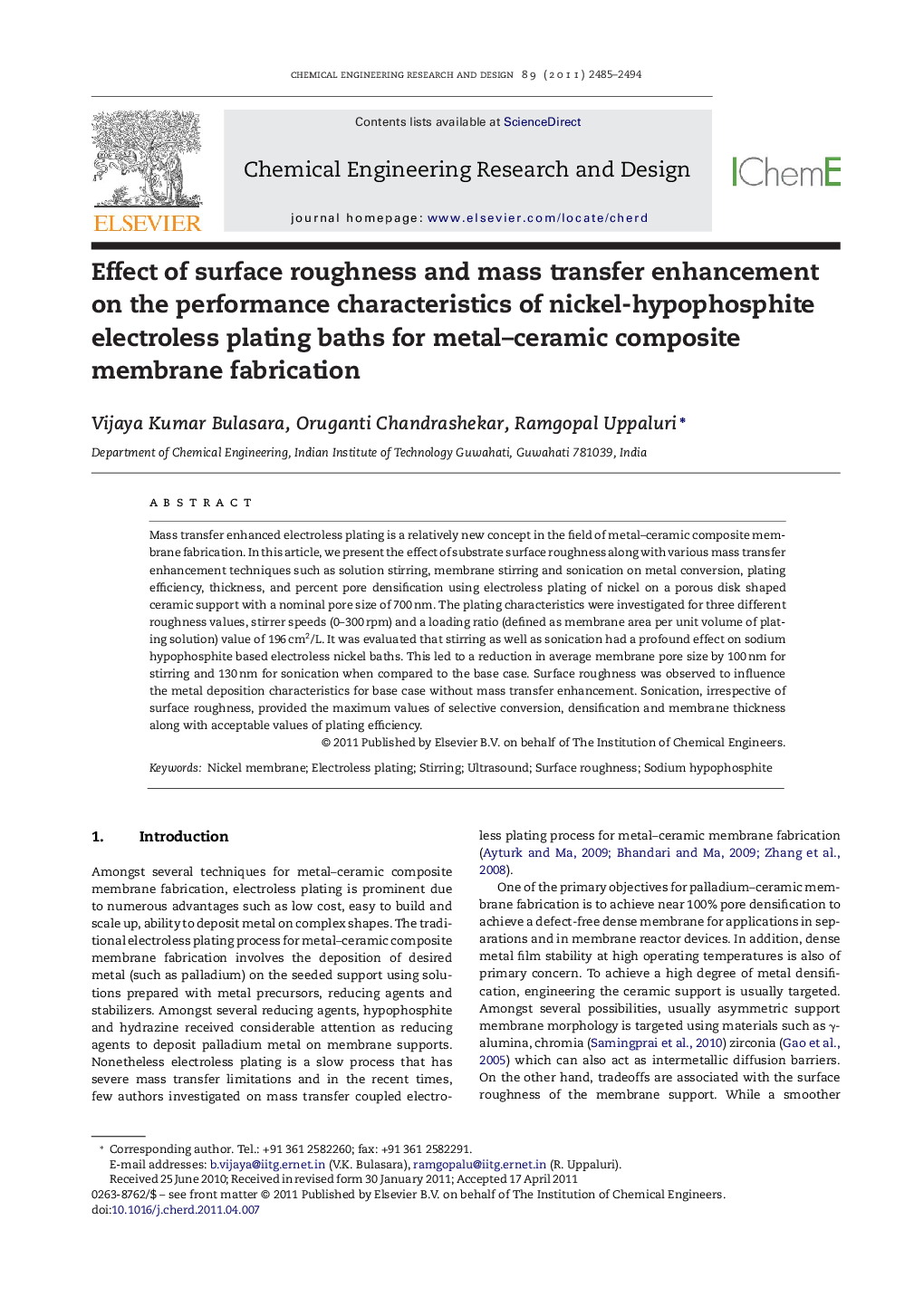| Article ID | Journal | Published Year | Pages | File Type |
|---|---|---|---|---|
| 620804 | Chemical Engineering Research and Design | 2011 | 10 Pages |
Mass transfer enhanced electroless plating is a relatively new concept in the field of metal–ceramic composite membrane fabrication. In this article, we present the effect of substrate surface roughness along with various mass transfer enhancement techniques such as solution stirring, membrane stirring and sonication on metal conversion, plating efficiency, thickness, and percent pore densification using electroless plating of nickel on a porous disk shaped ceramic support with a nominal pore size of 700 nm. The plating characteristics were investigated for three different roughness values, stirrer speeds (0–300 rpm) and a loading ratio (defined as membrane area per unit volume of plating solution) value of 196 cm2/L. It was evaluated that stirring as well as sonication had a profound effect on sodium hypophosphite based electroless nickel baths. This led to a reduction in average membrane pore size by 100 nm for stirring and 130 nm for sonication when compared to the base case. Surface roughness was observed to influence the metal deposition characteristics for base case without mass transfer enhancement. Sonication, irrespective of surface roughness, provided the maximum values of selective conversion, densification and membrane thickness along with acceptable values of plating efficiency.
► Sonication provided the highest selective conversion than agitated plating baths. ► Optimal stirrer speed was about 300 rpm for solution stirring case. ► Maximum pore densification was observed for supports with higher surface roughness.
